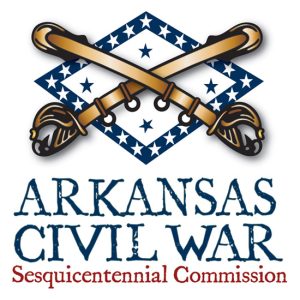calsfoundation@cals.org
Washington and Benton County Expedition
| Location: | Washington and Benton counties |
| Campaign: | None |
| Dates: | August 21–30, 1864 |
| Principal Commanders: | Lieutenant Colonel Albert W. Bishop (US); Unknown (CS) |
| Forces Engaged: | First Arkansas Cavalry, Company K of the Sixth Cavalry Missouri State Militia, one mountain howitzer (US); First Cherokee Cavalry and various guerrilla groups (CS) |
| Estimated Casualties: | None (US); 3 killed (CS) |
| Result: | Union objectives completed |
After the battles of Pea Ridge and Prairie Grove, the Civil War in northwestern Arkansas settled into smaller skirmishes and interactions between irregular forces on both sides of the conflict. To attempt to control the Confederate guerrillas, Colonel Marcus LaRue Harrison, Union commander at Fayetteville (Washington County), sent out frequent expeditions to hunt down and dislodge Rebels. He also devised a plan to destroy or disable grist mills belonging to or operated by Rebels. Harrison felt that the mills were congregating places for the Rebels and that the destruction of those places would lessen problems with guerrillas.
On August 21, 1864, some of the Union troops serving under Harrison prepared to leave Fayetteville on an expedition through Washington and Benton counties. Harrison had received word that a force of 400 Native Americans allied with the Confederacy and bushwhackers under Colonel William Penn Adair were camped at Cane Hill (Washington County). Adair was the commander of the Confederate Second Cherokee Mounted Volunteers, and sometimes he included with his troops some of the irregular forces that had plagued northwestern Arkansas.
At 10:00 p.m. on August 21, Lieutenant Colonel Albert W. Bishop led an expeditionary force of 300 of the Union troops from Fayetteville toward Cane Hill. The troops were made up of members from the First Arkansas Cavalry, Company K of the Sixth Cavalry Missouri State Militia, and one mountain howitzer. The next morning, Sergeant Isaac J. Miles of Company H, First Arkansas Cavalry, leading the advance troops, surprised twenty-five or thirty men from Brigadier General Stand Watie’s First Cherokee Cavalry. The Confederate men fled, and no action could be provoked. Bishop moved the force to Rhea’s Mill (Washington County) and camped. Bishop learned that the troops under Adair had gone south, so he ordered Captain Alfred Pearson, Assistant Surgeon Jonathan B. Tefft, and the 100 dismounted men of the First Arkansas Cavalry to return to Fayetteville.
Bishop and the remaining soldiers of the First Arkansas Cavalry, as well as Captain Eli Hughes with Company K of the Sixth Cavalry Missouri State Militia, moved to Cincinnati (Washington County). From there, they continued on across Benton County toward Neosho, Missouri. They were able to surprise some bushwhackers and capture a few horses, mules, and other equipment as they continued. At noon on August 27, they reached Neosho, and at this point Hughes left with the Missouri troops for Springfield, Missouri. On August 28, Bishop started with his detachment and the howitzer back to Fayetteville.
They camped one and a half miles south of Pineville, Missouri, where they ran some bushwhackers into the woods and captured two horses. They burned a flouring mill in Missouri north of the Arkansas line because none but Rebels lived in its vicinity. On August 29, they arrived at Bentonville (Benton County) at 1:00 p.m. and destroyed Williams’s and Walters’s mills on the way on Sugar Creek; some Rebel women were encountered at the later mill. After leaving Bentonville, the Union troops moved down Lick Creek and surprised and killed two bushwhackers and a Rebel spy. The spy possessed passes from Brigadier General Maxey (CS) and also from some other minor Confederate commanders.
On August 30, they traveled to the mill on Osage Creek (Washington County), owned by William “Buck” Brown, a notorious Confederate guerrilla, and disabled it. They disabled one more mill on Barren Fork of Illinois Creek and then arrived at Fayetteville at about 4:00 p.m. No more Rebels were encountered on the final march. Bishop reported that he had divided all the horses and mules captured with Hughes. He also reported that there was forage and corn in abundance in western Washington and Benton counties and, as there was scarcely a Union man farming in that portion of the counties, the crops should be quickly secured for the Union garrison at Fayetteville.
For additional information:
Britton, Wiley. The Civil War on the Border. Vol. 2. Memphis: General Books, 2011.
The War of the Rebellion: A Compilation of the Official Records of the Union and Confederate Armies. Series I,Vol. 41, pp. 266–70. Washington DC: Government Printing Office, 1893.
Carolyn Yancey Kent
Jacksonville, Arkansas


 ACWSC Logo
ACWSC Logo 



Comments
No comments on this entry yet.